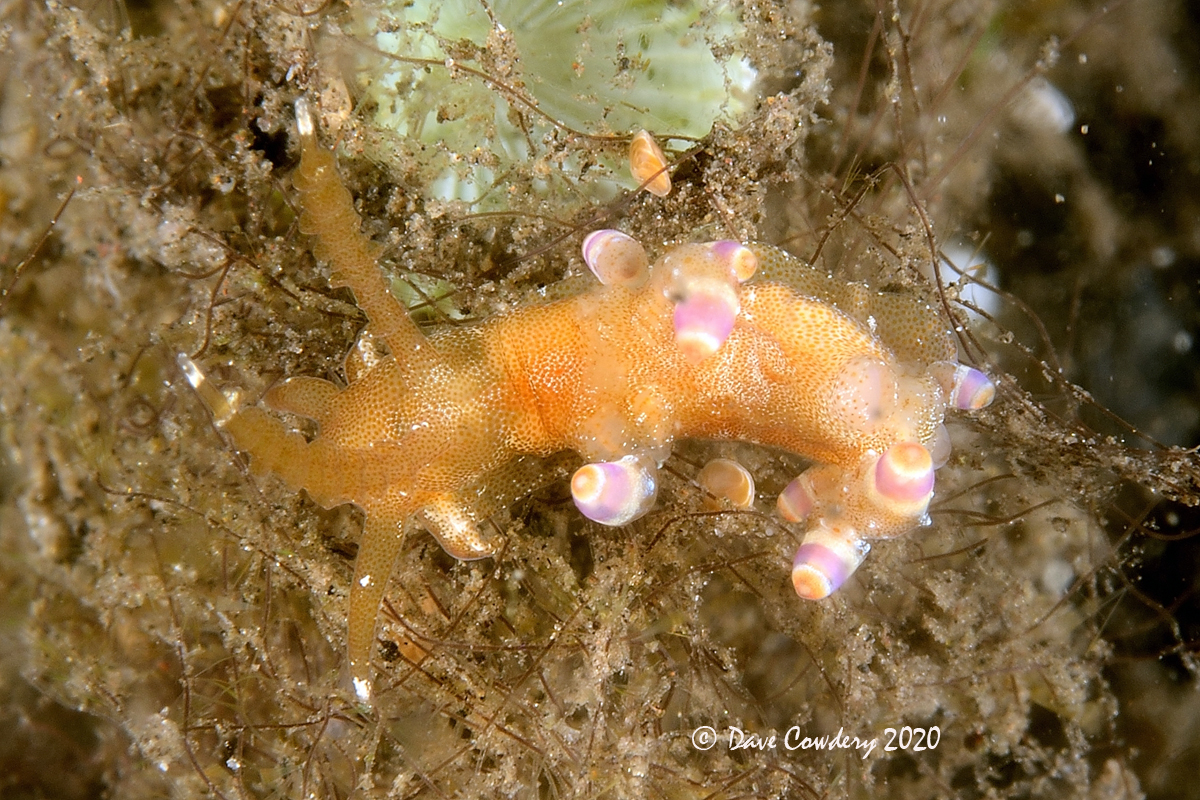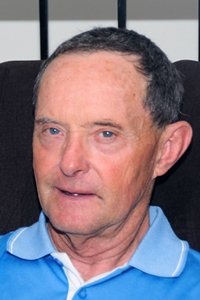 |
Image courtesy of David Cowdery
Bontoh Village, Sangeang, Komodos, Indonesia
So every now and again Webmaster Mike and I get an email with a critter like this attached (why do I think most of them are from friend and slug-o-phile David Cowdery)? Okay - what is it is?
Before I send it off to Branch experts Terry Gosliner. and Angel Valdez, for my good buddies professional consultation I look at the rhinophores and if it's an aeolid looking critter, I look at the cerata. So what do you think? I was stumped. David Cowdery had ID'ed it as a Eubranchus. My first, gut level, response was "No way- rhinophores are all wrong."
Then I sent it out to the expert Boys. Oops, maybe I jumped to a premature conclusion. Although none of us have ever seen this particular critter, I cannot discount it as a Eubranchus, as Eubranchus sp. 1 in NSSI 2nd Edition has annulate rhinophores. Terry has now straightened me out reporting that he has found a number of species which are genetically identical to Eubranchus and have annulate rhinophores. Help me Rhonda.
The genus Eubranchus is now considered to belong in the Family Fionidae Odhner, 1934, based on molecular studies. The two major characteristics shared by all members of the genus is a triseriate radula (the only characteristic separating it from Tenellia (=Cuthona)) and bulbous, swollen cerata.
Well we don't know about the radula of David's critter, but is does have those characteristic cerata, and rhinophores similar to Eubranchus sp. 1 in NSSI 2nd ed. The coloration doesn't match any species of Eubranchus we are aware of so let's call in a newly discovered, undescribed species. The gold speckling on the body and the bands on the cerata should make it easy to distinguish.
Great find David.
Reference:
Odhner N. H. (1934). The Nudibranchiata of British Antarctic Expedition. British Antarctic ("Terra Nova") Expedition, 1910. Natural history reports. Zoology. 7: 229-310
Dave Behrens
Sammamish, WA 98074
Oct., 2020
Send Dave Behrens email at davidwbehrens@gmail.com

Dave Cowdery is a retired bio-medical Engineer and is the inventor of the Alumina/Titanium hermetic feedthrough (1970) for implantable bionics and the first to introduce a Titanium casing. This invention created the first bionic implant (pacemaker) with a service life that could be measured in years rather than months and is the basis for todays huge multi billion dollar bionic industry. David is a Divemaster with over 5,500 dives experience and is based near Byron Bay in Australia. David is also a keen competitive road bicycle rider covering over 400 km most weeks. Photographic equipment used Nikon D800 camera with DS160 substrobes.
Send Dave mail at divec@ozemail.com.au
|

Attention all you Sluggers, and you know who you are! The NSSI 2nd edition is now available in ebook PDF and book form . The hard back version will become available Nov. 1st. Both will cost $65 (individually). You will need to jump through a few hoops to get the electronic version as pdf distribution is protected by Adobe ID!! Please read the following to enable reading your electronic purchase! This new 2nd Edition is updated and reorganized, including 185 new species. Among other features, the new edition includes additional photographs of species, an identification key, and an up-to-date classification reflecting the latest evolutionary relationships. The Indo-Pacific represents the largest expanse of tropical ocean in the world, stretching from the Indian Ocean coast of southern Africa and the Red Sea to the central Pacific of the Hawaiian Islands, Easter Island and the Marquesas. This region supports the most diverse marine fauna of any place in the world for most groups of marine organisms. The nudibranchs and sea slugs are no exception to this rule; there are about 3,000 described species of these organisms in the world and at least 40% of these have been found exclusively in the Indo-Pacific tropics. This book illustrates 2,138 Indo-Pacific nudibranchs and sea slugs, including many undescribed species.
|

|
